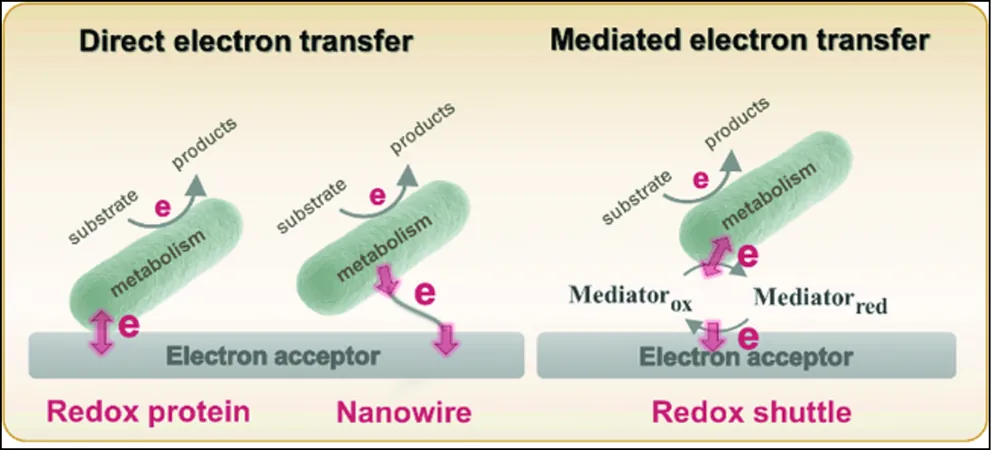
Unlocking Longevity: How 'Nanoflowers' Could Recharge Our Cells and Combat Aging!
2024-10-07
Author: Li
Introduction
In a groundbreaking development, researchers are harnessing the power of nanotechnology to rejuvenate the cell's energy sources, specifically targeting aging and related diseases! As we age, the efficiency of our cells’ energy generators—known as mitochondria—diminishes, leading to a slew of health issues such as fatigue, tissue degeneration, and the rapid onset of age-related diseases.
The Role of Mitochondria
Mitochondria are crucial for energy production, and their decline spells trouble for our vitality and general health. As a result, what used to be simple activities become exhausting, a stark reminder of the role these organelles play in our daily lives.
Current Treatments for Age-Related Diseases
Current medical treatments mainly focus on managing symptoms of age-related diseases like type 2 diabetes, Alzheimer’s, and Parkinson’s. However, a dynamic team of researchers led by Kanwar Abhay Singh from Texas A&M University is pioneering a novel approach—recharging mitochondria using specially designed 'nanoflowers.'
What Are Nanoflowers?
These innovative molybdenum disulfide (MoS₂) nanoflowers resemble delicate flowers in structure. They possess unique atomic vacancies that have shown the potential to stimulate mitochondrial rejuvenation, allowing our cells to produce more energy. This could potentially revolutionize the way we treat a range of degenerative conditions by addressing the root cause rather than merely alleviating symptoms.
Research Findings
The pioneering research has been shared in the prestigious journal *Nature Communications*. According to Akhilesh Gaharwar, a leader in this groundbreaking research, 'These findings pave the way toward the future possibility of recharging our cells, extending healthy lifespans, and enhancing outcomes for patients suffering from age-related diseases.'
Broader Implications
But that’s not all! The implications of this discovery could reach far beyond mitochondrial function. Researchers believe that the nanoflowers could transform treatments for conditions ranging from muscular dystrophy to neurodegenerative disorders by significantly increasing ATP production, mimicking mitochondrial DNA, and enhancing cellular respiration.
Mechanisms of Action
The research team has uncovered mechanisms whereby the atomic vacancies in these nanoflowers stimulate the pathways responsible for mitochondrial replication. Vishal Gohil, from the biophysics and biochemistry department, remarks, 'Not only are we improving mitochondrial function; we are revolutionizing our understanding of cellular energy. The prospects for regenerative medicine are immensely exciting!'
Decoding Cellular Responses
Moreover, with advanced computational tools, researchers are decoding the intricate cellular responses to these nanomaterials, setting the stage for precision medicine. Irtisha Singh, an affiliate assistant professor, aptly describes the endeavor: 'It’s like providing cells with the molecular 'instruction manual' to restore their powerhouses—mitochondria!'
Future Directions
As the research pushes forward, the team's next challenge is to find effective delivery methods for the nanoflowers to human tissue, with aspirations for future clinical applications. Gaharwar aptly summarizes their mission: 'In science, the tiniest details can lead to the most remarkable discoveries. By focusing on atomic vacancies in nanomaterials, we’re unveiling innovative solutions to monumental problems.'
Conclusion
Will these remarkable nanoflowers become the key to unlocking our longevity and revitalizing the aging process? Stay tuned, as these scientific advances could herald a new dawn in healthcare!

 Brasil (PT)
Brasil (PT)
 Canada (EN)
Canada (EN)
 Chile (ES)
Chile (ES)
 España (ES)
España (ES)
 France (FR)
France (FR)
 Hong Kong (EN)
Hong Kong (EN)
 Italia (IT)
Italia (IT)
 日本 (JA)
日本 (JA)
 Magyarország (HU)
Magyarország (HU)
 Norge (NO)
Norge (NO)
 Polska (PL)
Polska (PL)
 Schweiz (DE)
Schweiz (DE)
 Singapore (EN)
Singapore (EN)
 Sverige (SV)
Sverige (SV)
 Suomi (FI)
Suomi (FI)
 Türkiye (TR)
Türkiye (TR)